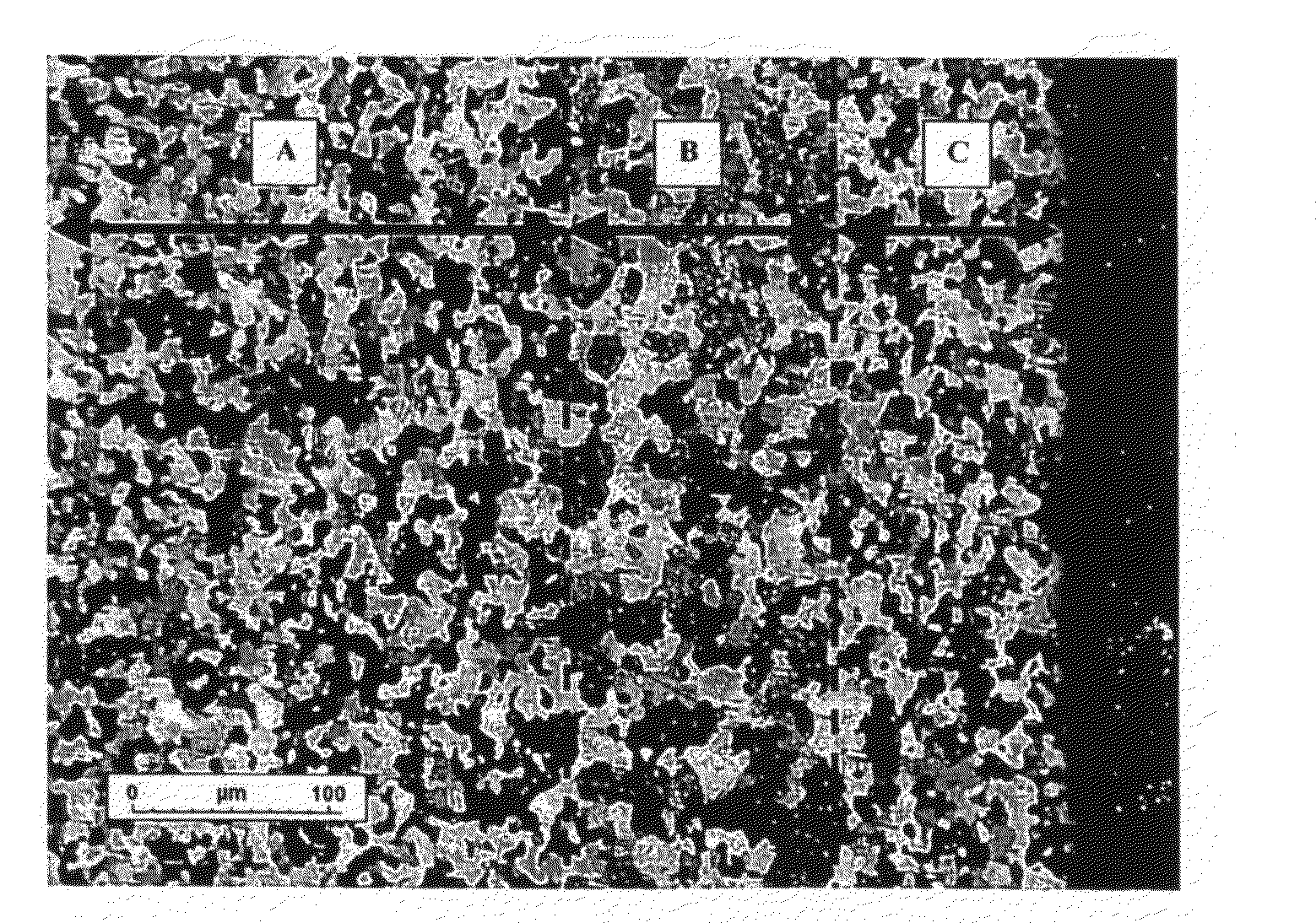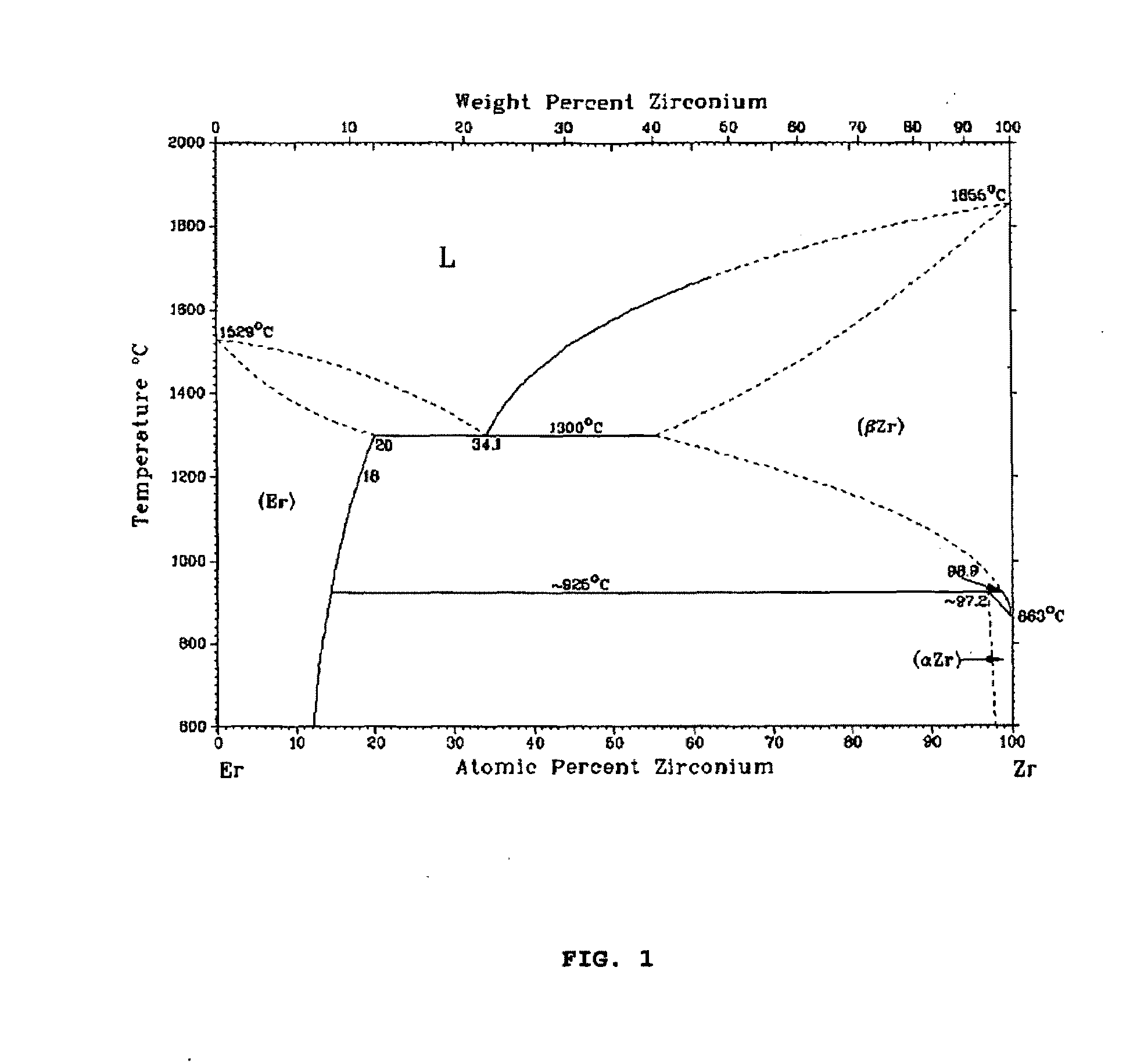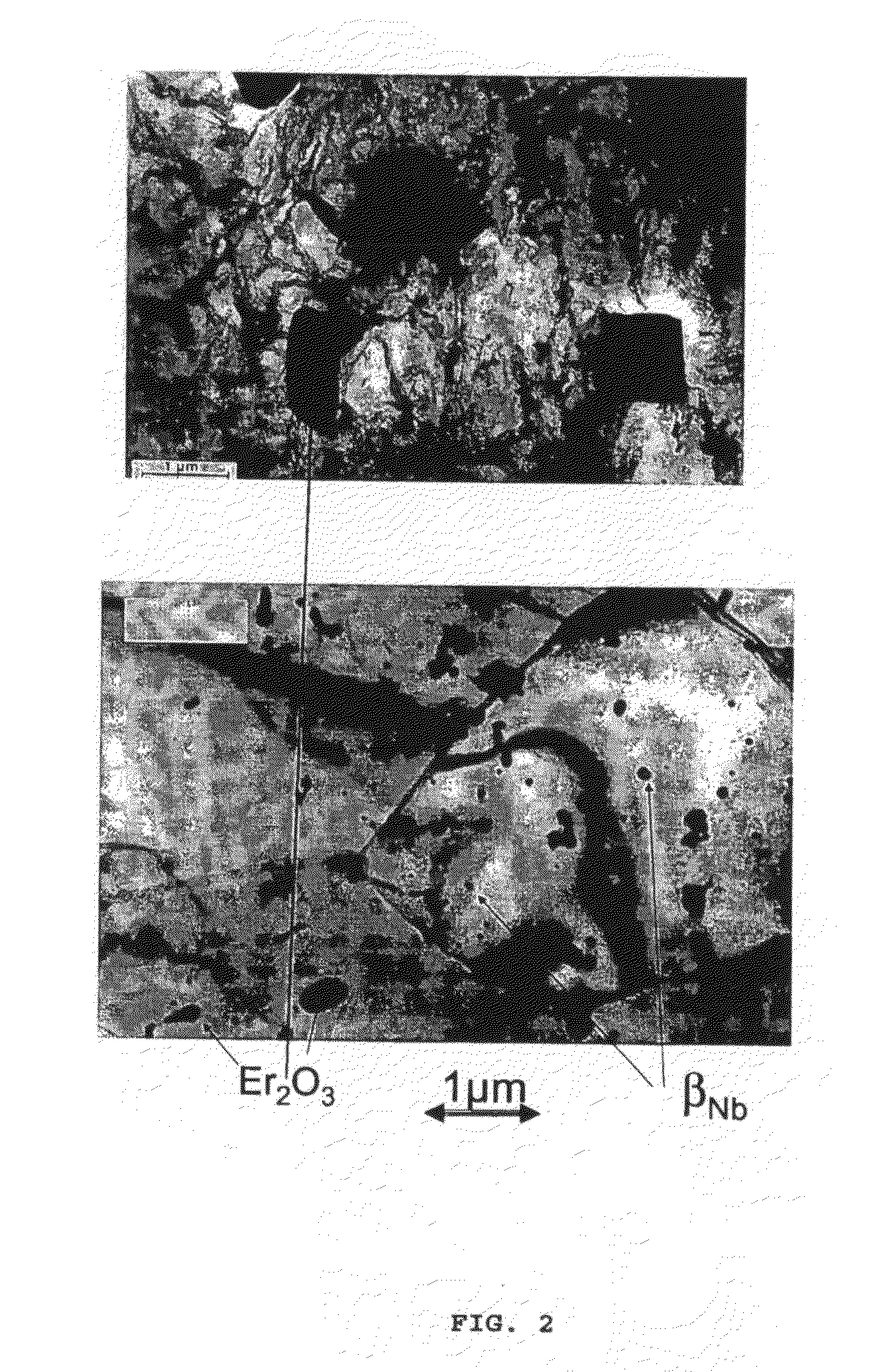For instance, introducing
gadolinium directly into the fuel, in addition to contaminating the fuel production lines, contributes to a deterioration of its
thermal conductivity with a resulting growth of hot spots.
Furthermore, the compatibility of
gadolinium with other fuels such as MOX is uncertain and complex to implement.
Finally, the poisoning is achieved by introducing
gadolinium into some rods of the
assembly: consequently, it is heterogeneous and also affects the
assembly's radial power distribution.
The solution proposed therein has the
disadvantage that incorporating erbium exclusively in the form of the 167Er
isotope, although promoting the use of a lesser quantity of erbium for the same
neutron efficiency, leads to increased production costs, which may prove to be prohibitive, because of the isotopic separation technologies needed to extract the 167Er
isotope from natural erbium.
However, this technology has some drawbacks and limitations, some of which will be described below.
Specifically, a microstructural analysis of the erbium-containing
zirconium alloy of the rolled sheet reveals the presence of coarse precipitated erbium oxides (having an
average size of the order of 1
micrometer or even more), which are detrimental to the mechanical properties, as illustrated in the examples below.
i) there is an objectionable problem of
corrosion resistance of the erbium-containing zirconium alloy layer when the
nuclear fuel cladding which contains it is put to use in an oxidizing medium, such as pressurized water (PWR) or
water vapor (BWR).
On the other hand, the formation of coarse erbium
oxide precipitates (with an
average size of the order of 1
micrometer or even more) generated by the heat processes involved in the manufacturing and / or shaping treatments (such as the so-called beta-phase zirconium “homogenization” processes at high temperature (≧1000° C.) commonly used in the upstream stage of the manufacturing sequence) may prove particularly detrimental to mechanical properties such as, for example,
ductility (the ability of a material to deform plastically without breaking) and
toughness (the property of a material having both a maximum tensile strength (the so-called
mechanical strength) and a low tendency to propagate cracks) which could already be expected to deteriorate due to erbium's poor
solubility at low temperature (namely 600° C. or less) in the zirconium-alpha.
This oxidation may lead to
embrittlement of the cladding, possibly followed by its deterioration or even destruction.
This renders the concepts of these first two families of solutions dangerous and hardly acceptable with regard to safety, since the
nuclear fuel could spill outside its cladding.
This will necessarily lead to more or less fast
contamination of the tooling and to the possible production of debris and chippings containing a significant quantity of erbium.
As a result, when the production lines are used to shape other products made of a “more standard” zirconium alloy (for example industrial-grade cladding alloys of the Zircaloy®-2 and Zircaloy®-4, M5® type, or the like) for which the specifications impose particularly small
impurity levels of neutrophage elements such as erbium, these products run the risk of being exposed to uncontrolled surface
contamination.
The above would thus lead to prohibitive “additional manufacturing costs”;
In fact, the technology described therein suffers from limitations and shortcomings which are sometimes unacceptable for a nuclear fuel cladding:the above-described manufacturing processes appear to be complex, lengthy, costly and not straightforwardly transposable to industrial-scale production;only claddings in the form of thin platelets could be made.
However, in view of the foregoing limitations of the manufacturing processes, the manufacture of fuel cladding tubes with more complex geometries seems to be extremely difficult or even impossible to carry out;the choice of using pure erbium in the form of a
metal sheet is costly and complex because it is necessary, at each manufacturing step, to prevent erbium oxidation, since this material has a particularly strong affinity with
oxygen.
Furthermore, its use in a three-layer nuclear fuel cladding leads to a structure having abrupt metallurgical discontinuities between the various
layers.
From a mechanical point of view, such a structure is not adapted to in-service and / or accidental
temperature cycling (for example, differential expansion phenomena resulting in exfoliation may be feared).
Neutron calculations have shown that an intermediate layer having a significantly smaller thickness than the
total thickness of the cladding (that is, an intermediate layer having a thickness which is typically ⅙ and at most ⅔ of the
total thickness) and consisting of a zirconium alloy containing natural erbium in the range between 0.1% and 3.0% by weight, does not allow the targeted poisoning to be met throughout the volume of the nuclear fuel cladding, within the scope of use of such a cladding at high
burnup rates of up to 120 GWd / t.
 Login to View More
Login to View More 


